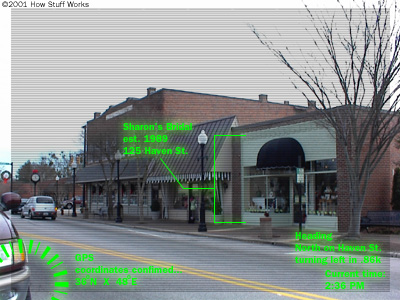Baines, A. (1998) “Technology and Tourism”, Work Study, Volume 47 · Number 5 · pp. 160–163. Emerald Publishing Group.
Hahn, J. (2011) "Location-Based Recommendation Services in Library Book Stacks", Reference Services Review, Vol. 39 Iss: 4. Emerald Publishing Group. [Online] Available at: http://www.emeraldinsight.com/journals.htm?issn=0090-7324&volume=39&issue=4&articleid=1949559 (accessed 4th November 2011)
Hein, W. O’Donohoe, S. (2011) “Mobile phones as an extension of the participant observer’s self”. Reflections on the emergent role of an emergent technology, Vol. 14 No. 3, pp. 258-273. Emerald Publishing Group.
HowStuffWorks "How GPS Phones Work". 2011. HowStuffWorks "How GPS Phones Work". [ONLINE] Available at: http://www.howstuffworks.com/gps-phone.htm. [Accessed 3rd November 2011]
HowStuffWorks "Location-based Services". 2011. HowStuffWorks "Location-based Services". [ONLINE] Available at: http://electronics.howstuffworks.com/everyday-tech/location-tracking3.htm. [Accessed 5th November 2011].
I know this great little place in London…. 2011. I know this great little place in London…. [Online]. Available at: http://www.greatlittleplace.com/. [Accessed 14 October 2011]
Jones, P. and Evans, J. (2006). Urban regeneration, governance and the state: exploring notions of distance and proximity. Urban Studies 43(9), pp.1491-1509. Academic Search Complete [Online]. Available at: http://web.ebscohost.com (Accessed 17 August 2010
Luberichs, J. Wachowiak, H. (2010), geographic information system-supported segmentation study of visitors to Majorca Island, in Joseph S. Chen (ed.) 6 (Advances in Hospitality and Leisure, Volume 6), Emerald Group Publishing Limited, pp.135-166 [Online]. Available at: http://www.emeraldinsight.com/books.htm?issn=1745-3542&volume=6&chapterid=1870831&show=html (accessed 29th October 2011
Ofcom | A nation addicted to smartphones. 2011. Ofcom | A nation addicted to smartphones. [Online]. Available at: http://media.ofcom.org.uk/2011/08/04/a-nation-addicted-to-smartphones/. [Accessed 05 November 2011]
Peres, R. Correia, A. Moital, M. (2011). “The indicators of intention to adopt mobile electronic tourist guides” Journal of Hospitality and Tourism Technology, Vol. 2 No. 2, pp. 120-138. Emerald Publishing Group.
Simmons, D. BBC News – Mobile Phone Applications Grow Up (2009) [Online] Available at: http://news.bbc.co.uk/1/hi/programmes/click_online/8143759.stm
(accessed 2nd November 2011)
Tonnis, M. Klein, L. Klinker, G. (2008). Perception thresholds for augmented reality navigation schemes in large distances.
ACM International Symposium on Mixed and Augmented Reality |
pp. 189 -190 [Online] Available at: http://dl.acm.org/citation.cfm?id=1605331&bnc=1 (accessed 31st October 2011)
Travel brands need to check out location-based services | Opinion | New Media Age. 2011. Travel brands need to check out location-based services | Opinion | New Media Age. [ONLINE] Available at: http://www.nma.co.uk/opinion/industry-opinion/travel-brands-need-to-check-out-location-based-services/3017954.article. [Accessed 3rd November 2011]
Why Tourism? | World Tourism Organization UNWTO. 2011. Why Tourism? | World Tourism Organization UNWTO. [ONLINE] Available at: http://unwto.org/en/content/why-tourism. [Accessed 20th October 2011].


